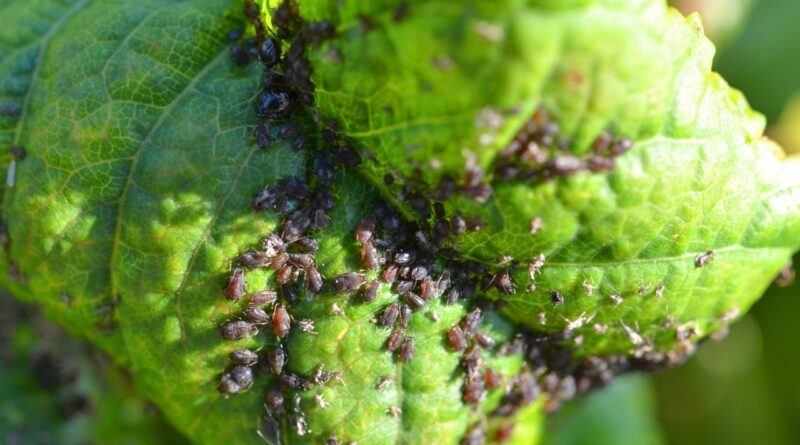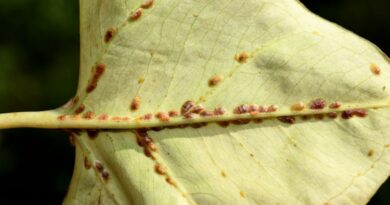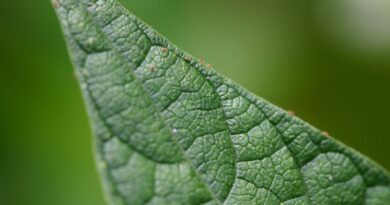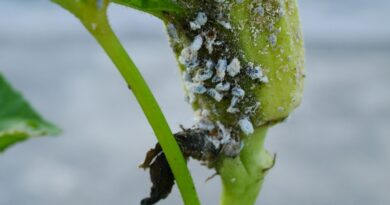A Basic Guide To Aphids
What are Aphids?
Aphids are one of the most common pests that can be found in every garden. There are approximately 4,000 aphid species found throughout the world. Aphids are small, soft bodied, pear-shaped insects that may be green, yellow, brown, red, grey or black in colour depending on the species. Some aphids have a waxy, wooly or powdery coating. Generally, most adult aphids are wingless but if the population becomes crowded most aphid species can develop wings to help them travel to other plants in search of food and to start new colonies. These pests feed on a wide variety of plants but some species of aphids can be specific to certain plants for example banana aphids, cabbage aphids, potato aphids, citrus aphid, mango aphid, and bean aphids. Aphids can be found feeding in clusters under leaves and on new plant growth.
Aphids life cycle
Female aphids may lay eggs or give birth to nymphs. Wingless female aphids hatch from eggs and soon give birth to many nymphs that are only female. The` young nymphs grow bigger and within a week give birth to many more nymphs. This process is repeated over and over and results into a huge population. As the colony grows, a few of the females develop wings and fly off to other plants to start new colonies. In temperate regions of the world, as it nears winter, sexual forms (male and females) develop which mate and lay eggs which remain dormant through winter until spring when they hatch. In the tropics, no male aphids are produced and female aphids do not lay eggs. Warm and dry weather is particularly favourable for rapid increase of aphid numbers.
Identifying Aphid damage
Both aphid nymphs and adults feed on plant sap, the nutrient-rich liquid of plants, attacking leaves, stems, buds, flowers, fruit and/or roots depending on the species. So how do you know that your plant has an aphid attack even before you spot them?
- Look out for curled, stunted or yellowing leaves, distorted or deformed flowers or fruit. You may also notice a sticky substance covering the leaves and stems of your plants. From a distance this substance may appear as an oily coating on the leaves and stems. This sticky substance is called honeydew and it’s a sugary liquid which is produced by the pests as waste after feeding on the plant sap.
- The honeydew attracts other insects especially black ants which collect it as food. So, a lot of ant activity on your plants is also an indication of an aphid attack or another sap-sucking pest.
- The honeydew produced by the aphids also encourages the growth of sooty mold which turns the leaves and branches black. Heavy coating with the sooty mold may reduce photosynthesis thus affecting plant growth and yield.
- An abundance of natural enemies such as ladybirds, can also indicate a presence of aphids.
- Some aphid species cause abnormal outgrowths to form on roots or leaves.
Control and prevention
Aphid prevention and control in the garden involves both long term preventative measures and short-term curative measures. Long term preventative measures include practices that revolve around cultural practices and habitat management. These practices include:
- Regular scouting of plants at all stages of growth. Pay more attention to the underside of leaves and on new growth buds because that’s where aphids like to hide. The presence of ants may indicate presence of aphids. Yellow traps are useful for monitoring and controlling winged aphids. The ants that feed on the honeydew protect the aphids from their natural enemies therefore controlling the ants is very important
- Growing healthy plants. Healthy plants are able to fight off pest and disease attacks better that weak plants. Excessive use of nitrogenous fertilizers such as manure and other artificial fertilizers produces a lot of leafy growth which attracts aphids. Compost is highly recommended as an alternative to these fertilizers.
- Companion planting and intercropping increases plant diversity which attracts the good bugs most of which are natural enemies of aphids. Depending on the plants used and the pattern of cropping, mixed cropping may help disrupt the lifecycle of pests and control their population. A good example is planting onions with cabbages. The onions repel and reduce the number of aphids that would otherwise have attacked the cabbage if planted alone. However, the mixture of plants needs to be chosen carefully because not all plants are good companions for example beans and onions. Growing flowering plants as companion plants in the garden also attracts the good bugs.
- Use of trap crops such as dill and nasturtiums which are very attractive to pests helps to protect the main crops in the garden. Trap crops can be planted around and inside the garden. It is important to monitor trap crops and they should be destroyed when they are severely infested to keep the pests from moving to the other plants.
- Avoiding use of pesticides which are toxic to the good insects. If pesticides must be used, spraying must be done very early in the morning or late in the evening when the beneficial insects are not active.
Once aphids are spotted in a garden, it is important to get them under control as soon as possible because they reproduce quickly. Despite weakening the plants and destroying flowers and fruits, aphids can also transmit viruses between plants. There are biological and physical methods to aphid control. It is always good to start with the physical methods before resorting to using any insecticides/pesticides.
- Pinch or prune off heavily infested leaves or other plant parts.
- Aphids can also be sprayed off plants using a strong stream of water from a hose pipe. This helps to reduce the pest numbers because most of them will be knocked off the plant and die.
- Yellow sticky traps can be used to attract and trap winged aphids. This will help to reduce the spreading of the pests to other host plants.
- Diatomaceous earth is a non-toxic organic material that will kill aphids. It is made up of tiny fossilized aquatic animals that look like broken glass under the microscope. It kills the pests by scouring its outer layer as it crawls over the fine powder. DE should not be applied when plants are flowering because it also harms pollinators.
- A mix of organic liquid soap and water can also be used to control aphids. The soap dissolves the protective outer covering (exoskeleton) of the aphids causing them to dehydrate. This mixture only works on contact with the insects.
- Mix 1 tablespoon of organic liquid soap with 1 litre of water. Do not use washing detergents. Apply on the infested plants thoroughly including the undersides and, on any crevices where the aphids usually hide. Avoid spraying when the sun is hot because it may cause burning of the leaves. Spray early in the morning or late afternoon. Spray every 3 to 5 days depending on the level of infestation for better efficacy.
- Neem oil is an effective organic method of controlling most pests. It contains an active ingredient called azadirachtin which suppresses the aphids’ growth and their appetite and they starve to death. Neem oil also kills aphids on contact by smothering and suffocating them. It is important to use pure cold-pressed neem oil for pest control in plants. Though neem oil can be used on its own, a mix of neem oil and organic liquid soap is even more effective. The soap not only helps to kill the aphids but it also acts as a ‘sticker’ by helping the neem oil to mix with the water well and to stick on the plants surface. Neem oil can be applied as a foliar spray or as a soil drench.
Neem oil foliar spray
– Fill your spray bottle halfway.
-Mix 1 teaspoon (5ml) of neem oil and 1 teaspoon (5ml) of organic liquid soap into the water.
– Fill up the bottle to the 1 litre mark.
-Shake well then spray.
-Soak the plant thoroughly especially under the leaves and joints.
Ensure to spray your plants early in the morning or late afternoon so as not to harm the beneficial insects and to avoid leaf scorching. When using neem oil on flowering plants, avoid spraying the flowers themselves. For food crops do not spray on the day of harvest. Give your plants at least 48 hours before harvesting. The spray can be reapplied after 14 days for mild infestations. In case of heavy infestation, it should be reapplied every 7 days for about 4 weeks.
Neem oil soil soak
Soil soak or drench works best on larger outdoor plants that are difficult to spray. It can last up to 22 days before needing another application. The plants will soak up the neem mixture and it will poison any pest that tries to feed on the plants. This method kills the aphids without harming pollinators or other beneficial insects. Use the soak when there is no rain so that the neem won’t be dispersed before being absorbed.
-Mix 1 teaspoon of the soap into 1 litre of water and stir.
– Add 2 tablespoons of neem oil to the water.
– To apply, pour a fair amount of the mixture onto the soil around the target plants. Cover a wide enough radius to feed most of the roots. About 2 to 4 cups for average size indoor/outdoor plants. More is required for trees and larger shrubs.




